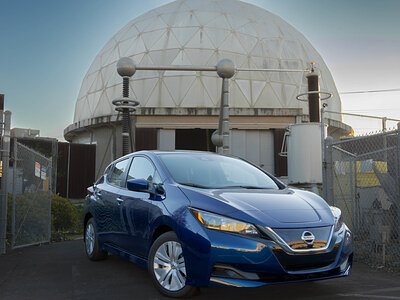
EVs as Grid Assets: California Microgrid Pioneers Bidirectional Charging for Resilience
A Northern California airport is leading the charge in energy innovation, using electric vehicles to power critical infrastructure and stabilize the grid. This project signals a shift towards a more resilient, sustainable energy future.
EVs as Grid Assets: California Microgrid Pioneers Bidirectional Charging for Resilience
MCKINLEYVILLE, CA – November 13, 2025
A small airport on the rugged Northern California coast is quietly demonstrating a potentially transformative shift in how we think about electric vehicles. The Redwood Coast Airport Microgrid (RCAM) in McKinleyville isn't just powering planes and airport operations with renewable energy—it’s leveraging electric vehicles as dynamic grid resources, bolstering resilience and paving the way for a more sustainable energy future. This innovative project is showcasing how EVs can move beyond transportation to become integral components of a flexible and robust energy system.
Powering Through Uncertainty: The RCAM Microgrid
RCAM isn’t just a collection of solar panels and batteries; it’s a fully operational, independently functioning microgrid serving the California Redwood Coast-Humboldt County Airport, the U.S. Coast Guard Air Station, and 17 other customers. Fully operational since 2022, the 2.3 MW / 8.9 MWh battery energy storage system (BESS) coupled with 2.2 MW of solar generation, allows the microgrid to operate in 'island mode,' separating from the larger grid during outages. This capability proved crucial during a 6.4 magnitude earthquake in December 2022 and several subsequent winter storms, keeping critical airport and Coast Guard operations running seamlessly.
“The ability to island and maintain operations during grid events isn’t just about convenience; it’s about safeguarding critical infrastructure and ensuring public safety,” explained a source close to the RCEA. “RCAM is proving that communities can take control of their energy destiny and build resilience against increasingly frequent disruptions.”
From Wheels to Watts: The V2X Breakthrough
The real innovation, however, lies in the integration of Vehicle-to-Everything (V2X) technology. RCAM recently demonstrated the ability to utilize two Nissan LEAF electric vehicles, equipped with bidirectional charging capabilities, to both draw power from and discharge electricity back into the microgrid. This allows the vehicles to act as mobile energy storage units, providing grid stabilization services, supporting local resilience, and even participating in California’s Emergency Load Reduction Program (ELRP).
“It’s a game-changer,” a source familiar with the project stated. “For years, EVs have been seen as a drain on the grid. Now, we’re proving that they can be an asset, providing flexibility and capacity when and where it’s needed most.”
The bidirectional charging setup, utilizing Fermata Energy’s FE-15 and FE-20 chargers, is allowing the airport to participate in demand response programs, earning revenue by providing energy back to the grid during peak demand. This not only reduces costs for the airport but also contributes to a more stable and resilient grid for the entire region.
Beyond McKinleyville: Scaling V2X for a Sustainable Future
The RCAM project is more than just a local success story. It’s a blueprint for a broader transition toward a more sustainable and resilient energy system. The increasing adoption of EVs, coupled with advancements in bidirectional charging technology and supportive policies, is creating a ripe environment for V2X adoption.
While the technology is still evolving, the cost of bidirectional chargers is falling, and more automakers are incorporating V2X capabilities into their vehicles. GM, for example, has committed to making all of its EVs bidirectional by 2026. Moreover, programs like California’s ELRP are incentivizing the use of EVs for grid services, creating a financial incentive for V2X adoption.
“The potential is enormous,” said one industry analyst. “If we can unlock the full potential of V2X, we can create a more flexible, resilient, and sustainable grid that can accommodate the increasing penetration of renewable energy sources.”
However, challenges remain. Regulatory frameworks need to be adapted to facilitate V2X adoption, and concerns about battery degradation need to be addressed. “Standardized communication protocols and transparent data sharing will be crucial to ensure interoperability and trust,” said another source. Nonetheless, the momentum is building, and projects like RCAM are demonstrating that V2X is not just a futuristic concept – it’s a viable solution for building a more sustainable energy future.
📝 This article is still being updated
Are you a relevant expert who could contribute your opinion or insights to this article? We'd love to hear from you. We will give you full credit for your contribution.
Contribute Your Expertise →